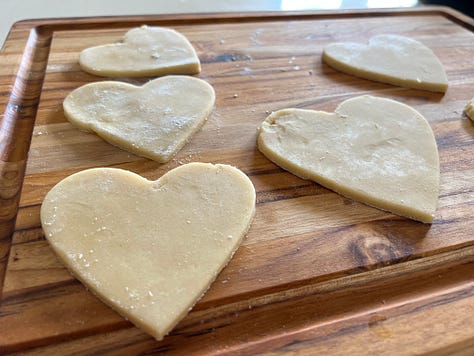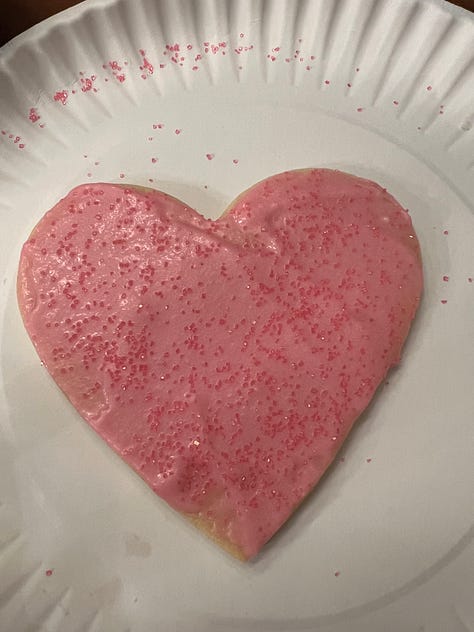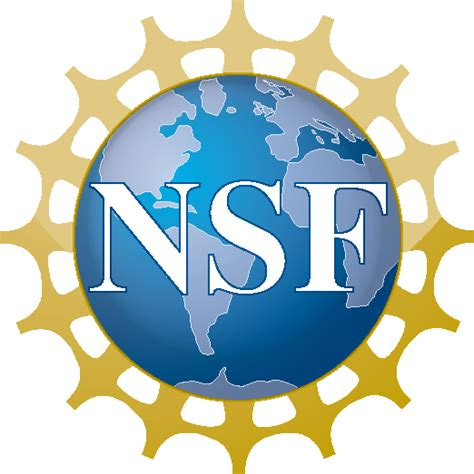Prolific Prototyper: How James Clear Embodies the Prototyping Mindset
Five lessons that can help you make progress on the stuff that matters

If you've been reading my newsletter for any length of time, you know that I am obsessed with finding examples of folks who embody the Prototyping Mindset. The frameworks of the Prototyping Mindset apply across disciplines: frameworks like a bias toward action, an explicit embrace of failure, the importance of iteration and repetition, and curiosity. But at its root, the Prototyping Mindset is about embodying the belief that the best outcome is discovered by iteration and learning from failure. If you look closely enough you’ll see examples of this beneath the stories of successful folks from a wide variety of fields and backgrounds: science, engineering, writing, comedy, entrepreneurship, and design just to name a few.
This week I want to share five1 lessons I learned from two prolific prototypers, James Clear and Tim Ferriss. James is best known as the author of the best-selling book Atomic Habits which has now sold more than 10 million copies. Tim is a successful investor and author, who hosts a fantastic podcast, The Tim Ferriss Show.
In their conversation on Tim's podcast, James talks at length about lessons he has learned that have shaped the mindsets that he uses to live an impactful life. While you should check out the whole 2+ hour podcast, in this post I want to highlight a few of the points which resonated most deeply with me:
Obsess over questions, not answers
Create artifacts that matter to increase your luck surface area
Realize that habits and systems, not aspirations, are what power your progress
Build habits that connect to the identity you wish to become
Leverage the power of your social environment
1. Obsess over questions, not answers
One of the first topics that James and Tim talk about is the process James uses for his annual review. What struck me from this section of the conversation was a comment James made about questions: Questions are resilient and adaptable. Advice, on the other hand, is brittle and highly dependent on your situation. This is a great way to state the value of curiosity.
A few of the specific questions that James mentioned are worth repeating here as well:
"What am I optimizing for?" — every decision we make has an implicit or explicit goal. This question helps to make the implicit explicit.
"Does this activity fill me with energy or drain me of energy?" — energy mapping is a classic mindset for discovering areas of misalignment. Figuring out how to reduce or outsource the activities that are the biggest drain is well worth the time.
"Does the amount of attention I'm giving the activity actually match its importance?"— just because you are doing the right things doesn’t mean that you’re giving them the appropriate amount of energy. This question can help you to reprioritize your work and discover where you may not be balancing your time and attention properly.
I like these questions because they apply regardless of what you do and probe the connections between your actions and intentions. As you think about what you're doing this week, consider using these questions as a coach.
2. Create artifacts that matter to increase your luck surface area
One of the most amazing things about James's story of becoming an author and selling over 10 million copies of Atomic Habits is that he did it without the traditional trappings and flashy credentials that other authors have leveraged for their first break. Instead, James built a following by consistently putting out quality content on his blog, eventually using it as the foundation for launching his book.
There are two main lessons I took away from this story. First, create and share things that are valuable. I resonated with this framing as it is at the heart of what inspired me to start this newsletter after reading Austin Kleon's book Show Your Work and being inspired to build and share what I am learning in public. Creating things of value embodies the bias toward action that is one of the key dispositions of the Prototyping Mindset. Make good stuff and put it out there.
My second takeaway from this part of the conversation was that building in public serves to increase your luck surface area. If you're not familiar with it, the idea of luck surface area is that you can optimize your chances at achieving your goals in life by giving yourself as many chances as possible for the chips to fall your way. Your chances of winning a raffle are higher if you buy 1000 tickets instead of 1. While the underlying process is still random, you have control over whether you are more or less likely to come out on the right side of the numbers.
Increasing luck surface area is a frame I like to use when applying for funding for my research. While there are systems and structures in place for adjudicating proposals based on their merit, there is an unavoidable amount of randomness in the process that will never be eliminated. As I regularly remind myself and my colleagues, every proposal you don't submit is guaranteed to not be funded.
James's big break was when a reporter from the New York Times discovered his blog and mentioned an article from it in their piece. Then someone from CBS This Morning saw the NYT article and invited him on the show. James then parlayed this into another interview on the launch day of Atomic Habits. None of this would have been possible if he didn't consistently increase his luck surface area by regularly putting out valuable content publicly on his blog.
3. Realize that habits and systems, not aspirations, are what power your progress
This is an obvious one, but I can't remind myself of this enough. I think a lot about how consistency is the most important quality for sustainable growth, whether physical, spiritual, or otherwise. But it is easy to forget that the worst days are more important than the best ones. The days where you just show up and keep the streak going are the most important—when all you can do is drag yourself to the computer to write for five minutes or pick yourself up off the couch for a five-minute walk.
One angle on this that I appreciated from the interview was the specific callout that we may have aspirations, but if we don't build the habits to consistently move closer to them each day then we will never achieve them. Again, this might seem obvious, but many of us don’t really confront this fact when we look at the way we spend our days.
An area where I am working to apply this advice is finding ways to spend more time on my scholarship during the academic year. In the midst of the daily work of email, course prep, and meetings it is easy to look up at the end of the day and wonder what happened to that pocket of time I planned to spend reading a paper, working on an experiment in the lab, or writing a few paragraphs for a proposal. After listening to this podcast, I was reminded that the reason that I am not finding time for these important tasks is because I don't have a keystone habit in place to help me make a little progress on my scholarship multiple times each week. This next week, I'm going to work to revisit my systems and brainstorm a few ways to create a new sustainable habit around this goal.
4. Envision the type of person you want to become and then use "how might I?" questions to make it happen
"Fake it till you make it" works because it helps you to develop an identity. Identifying with a certain persona you wish to become is a powerful way to motivate yourself. This idea gets to the root of the importance of being vs. doing. Both are important, but finding ways to become the person you want to be will help you keep going when you hit the inevitable bumps in the road.
There are a few different ways that I've used this in my own life to develop new habits. One is this newsletter. I have never thought of myself as a writer, but by writing consistently each week, I have embodied not only the actions of a writer but the mindset of a writer since I am thinking about ideas to share each day and constantly jotting down thoughts. I feel like a writer now. Another is the identity of someone who cares about their physical health which sparked and fuels my daily pushup habit.
James and Tim share a few examples of how they use this in their own lives, but I want to connect the way they do to a tool from the prototyping mindset toolbox to explain why this is so powerful: "how might I?" questions. The idea behind asking "how might I?" is to put yourself into a frame of mind that allows you to envision who you want to become and then figure out your next step toward that goal. This simple question helps you to step back from your current perspective and get a new angle on who you are trying to become.
This week, use the “how might I?” frame to envision how to become the person you want to be.
5. Leverage your social environment
One of my favorite Bible verses is 1 Corinthians 15:33 where Paul quotes the Greek poet Menander: "Bad company corrupts good character." While this statement emphasizes the negative impact that a bad environment can have, the flip side is also true.
Near the end of the podcast James shares a nugget about the importance of cultivating an environment that will help you to succeed when he says "find a community where your desired behavior is the normal behavior." This applies whether you are a student trying to develop better study habits, an athlete trying to improve your training, or an engineer trying to create more innovative solutions. No matter the field, the people you surround yourself with are immensely important.
As you think about the person you want to become, make sure to consider your environment. It might have more to do with your success than anything you do as an individual.
Find the people who inspire you to be your best and get yourself around them more often. Find the places that help you to think most clearly and spend more time there. Find the times of day where you are at your best (and worst) and use them accordingly.
So what?
What I learned most from this conversation is the power of curiosity. Be grateful for the path that has brought you to where you are now, and as you look to the future, find ways to take action to discover your way forward by asking questions, building habits, and cultivating an environment to make the vision of who you want to be a reality.
The Book Nook
Our current murder mystery book club selection is A Study in Scarlet by Arthur Conan Doyle. This is our first Sherlock Holmes mystery and it is interesting to see another take on a mystery novel. The more authors we read, the more I notice the different styles and formats that can be used to tell the story and present the resolution of the cases. This one isn’t a whodunit, but follows a two-part storyline where the first half of the book tells the story in the present day and the second half explains the details of the first half using the confession from the caught killer.
While I don’t think Sir Doyle can compete with Agatha, I did enjoy this read. I also found that it is difficult for me to read about Sherlock Holmes without visualizing Benedict Cumberbatch!
The Professor Is In
This last week I heard back with some exciting news about the proposal I submitted last summer. I’m happy to share that my NSF CAREER proposal, Next-generation Rhizosphere Monitoring - Non-invasive Plant Phenotyping and Health Monitoring Using the Light-piping Properties of Plant Stems, was officially awarded! This grant will help to support my work for the next five years. I’ll share more details about the project soon, but you can check out the award page on the NSF website now if you’re curious about the details.
The NSF CAREER program is designed to fund early-career faculty and help them to establish a firm foundation for a lifetime of leadership integrating education and research. As such, CAREER proposals have two main parts: a research plan and educational plan.
The goal of my project’s research plan is to exploit the light-piping property of plant stems and roots to develop the next generation of optical tools to investigate plant roots and their surrounding environments. This was inspired by a cool discovery that light can propagate through plant stems and roots like optical fibers.
The education plan integrates undergraduate and high school students into the research activities where they will learn a broad set of skills at the interface of engineering, optics, and plant biology. It also lays out my plans to develop a 3d-printed, low-cost computational microscopy platform and a set of accompanying course materials to teach optics concepts through microscopy.
Needless to say, I’m very excited for this project and can’t wait to get started this summer. I am thankful for the support of the NSF and look forward to working alongside my students at Harvey Mudd to make this proposal a reality.
Leisure Line



I really need a scale bar here to give you a sense of how big these are, but the top cookie sheet in the oven will have to do. The key lesson from this week is: if you give me a huge cookie cutter, I’m gonna use it :)
Still Life
I still can’t get over how amazingly vibrant these camellia flowers are from my backyard.
Five in honor of Tim’s famous Five Bullet Friday newsletter.






Congratulations on your grant! The topic of your grant reminds me of my own deep interest in (wait, is anybody monitoring this channel??) ID, and the fact that nearly everything we have ever achieved in engineering is already found, at least in concept if not in actual design and perfect execution, in the creation. Your topic for today's post is one which has been my Achilles heel all my life, which is that I have been scared to death of failure, but incurred it anyways along the way and hopefully learned from it. What doesn't help me is that some of my greatest career-related successes involved little if any failure. This doesn't help me because where my dreams are headed today, I need to get used to failure if I'm going to succeed. This is hard for me, but your post sheds a glimmer of hope.